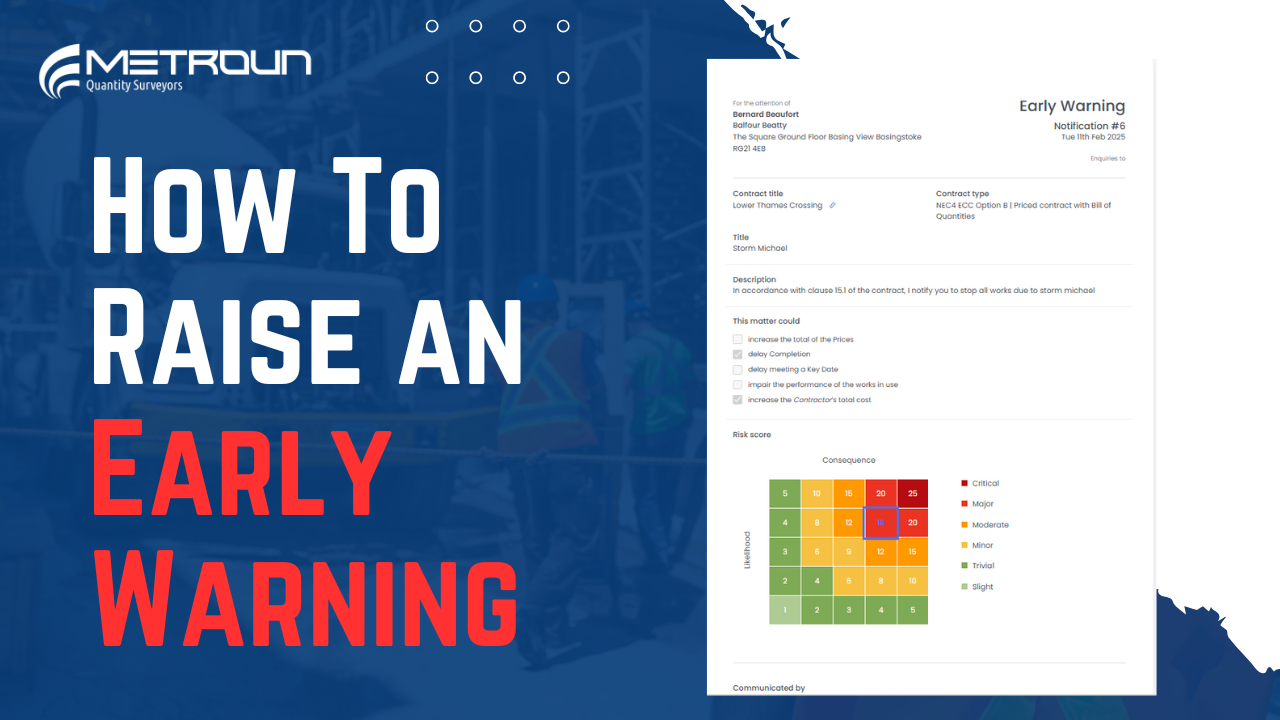Plain sailing is a phrase rarely spoken in construction. Projects are often riddled with bumps, hurdles and unexpected terrain. And along the way, there will be disagreements when things aren’t going the way they were intended. However, it’s not all doom and gloom. There are in fact things we can do to mitigate the impact or even occurrence of these problems. In this article, we’re going to explore 8 common construction claims, and what we can do to mitigate their impact, or avoid them all together. For this article, we’ll be using claims as a broad term. However, definitions vary depending on the form of contract used. In this article, we use the term claim to define the request or assertion made by one party involved in a construction project, typically seeking additional time or money.
Number 1: Unexpected Ground Conditions/ Differing Site Conditions
Everything can change once a shovel is in the ground. From concrete to hazardous materials, it’s not always possible to anticipate what’s below the surface. Differing site conditions can increase both the time and cost required to complete a project. It’s also not a given that issues with site conditions is something which the client is liable for. For instance, concrete in the ground in a major city might be something a reasonable contractor should have allowed within their price. In other cases, the site conditions may differ from what’s stated in the contract document. Site surveys can help mitigate the risk of differing site conditions. These could be anything from trial holes to ground penetrating radar (GPR).
Number 2: Scope Changes
Scope changes are a common source of disputes on construction projects. They occur when there are changes to scope after the contract has been signed. Regular and clear communication among all parties involved is essential to managing expectations and aligning visions. Implementing a change management process, in line with contract terms, is vital to help manage and document any scope modifications. This ensures that all changes are approved and understood by all stakeholders before implementation.
Number 3: Design Issues
If the design contains errors or omissions, this can lead to expensive construction claims. Especially if there are rectification works involved. To minimise the risk of claims related to design deficiencies, it is crucial to establish a comprehensive review process, maintain precise and consistent documentation of the design, and ensure ongoing communication and coordination with everyone engaged in the project. Engaging stakeholders during the design phase could also aid in mitigating design issues & maximising efficiency of designs. This can be facilitated through Early Contractor Involvement (ECI).
Number 4: Delays
These claims arise when the construction project takes more time to complete than agreed. Their impact can be minimised through proactive management. Implementing an early warning system can alert parties to potential delays, allowing for quicker responses to issues. Regular communication and updates to the programme schedule are essential to keep all stakeholders informed and engaged. Keeping detailed site records can also provide evidence for the causes of delays, facilitating easier resolution of disputes and issues on site.
Number 5: Damages
These claims normally relate to damage to equipment or property, due to the action of the owner, contractor, or subcontractor. To mitigate the impact of damage claims, it’s important to maintain adequate insurance cover. Site security & robust safety programmes could help prevent damages in the first instance.
Number 6: Quality/ Defects
These claims usually arise after completion of construction works. Implementing a robust quality management system can ensure that work is performed to the highest standard and complies with relevant regulations, standards, and specifications. Regular site inspections and keeping detailed records can help catch defects early and remedy them before they escalate into bigger problems.
Number 7: Payments
Disputes over payments can disrupt the smooth running of a construction project. To prevent this, it’s important to have clear and detailed contract documents which outline payment terms. Ensuring contract payment terms are understood and adhered to by both parties is crucial in mitigating risk of payment disputes. Regular communication about payment status and expectations can also prevent misunderstandings and ensure that all parties remain informed about their financial engagements.
Number 8: Acceleration
Programme acceleration claims occur when resources are increased to expedite project completion. To mitigate disputes arising from acceleration, it’s important all the necessary agreements are in place beforehand in line with contract terms. Having a detailed resource-loaded programme can help parties understand the impact of acceleration in terms of cost and budget.
Introducing Metroun Learning
Metroun Learning is an online education platform, specific to Quantity Surveyors which can satisfy all your formal CPD needs. We offer over 30 hours of formal CPD, with new courses added each month. Although all courses amass to 30 hours of formal CPD, each individual course has been engineered so it can be completed during your lunch break. This can save you time, money & reduce your carbon footprint. Metroun Learning will not only satisfy your formal CPD needs, but you’ll also gain access to:
- The QS Dictionary
- Industry-Ready Templates
- Metroun AI
- And a variety of construction conversion calculators
To join Metroun Learning, simply click here









